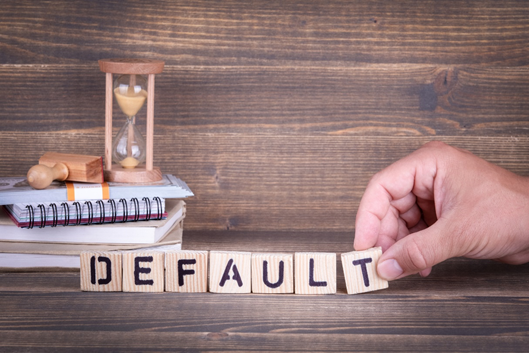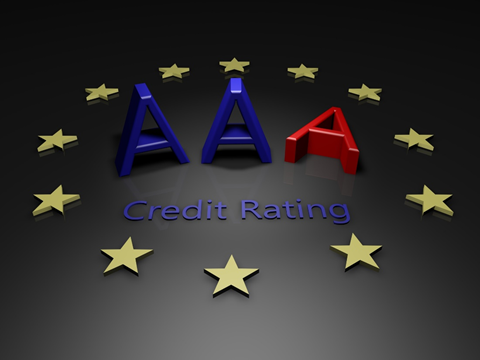What do you mean by default risk?
Default risk is the probability that a borrower will fail to fulfill his debt obligations, including non-repayment of the principal amount plus the interest as per terms of the debt security. The two main drivers of default risk include financial risk and business risk. A rating agency evaluates a company's or government entity's financial strength, particularly its ability to make principal and interest payments on its loans. Some of the factors contributing to default risk include unfavourable economic conditions like recession, huge losses, market conditions, poor cash flow and money stuck in long-term assets. In almost all kinds of credit extensions, both the lender and the investor are susceptible to default risk. Higher default risk always comes with a higher interest rate and results in higher returns.
Summary
- Default risk is the risk taken by a lender that there is a possibility that a borrower may not repay his principal amount plus the interest in a time-bound manner.
- Credit rating agencies quantify financial risks and help in identifying the default risk involved in an investment.
- Rating agencies like Standard & Poor's Global Ratings (S&P), Moody's Investors Service, or Fitch provide credit ratings for debt issues. Based on an organisation's creditworthiness and credit risk, these agencies categorise credit ratings into either investment grade or non-investment grade.

Image Source: © Tumsasedgars | Megapixl.com
Can default risk change? What are the factors responsible for a change in the default risk?
Whenever someone borrows money from a lender, there is always a probability that the money will not be paid back. Default risk measures this probability, i..e, whether the lender will get back his money or not. Default risk applies to the individuals and bond issuing companies that fail to make interest payments on the issued bonds due to financial constraints. Therefore, in the risk management strategy, it is always good for a lender extending the credit facility to measure the default risk of a borrower. Furthermore, before making any significant investment decision, investors should always determine the investment risk associated with a company by carefully studying its financial health.
To indicate a change in the default risk, credit ratings can be either be upgraded or downgraded. Several factors such as changes in financial condition, economic conditions, recession, blockage of money in long-term assets, poor cash flow can lead to a change in the default risk for a company. Economic recession impacts the overall economy, and its impact can be seen on almost all the companies and businesses irrespective of their size. In such a situation, any shortfall in a company's earnings or revenues can make it difficult for them to repay the debt. Therefore, there should be adequate net income and regular cash flow to mitigate default risk.
A company's cash flow statement, liquidity, earnings, and asset quality can gauge the financial risk associated with a company.
One can evaluate default risk for corporate/government debt issues by using standard measurement tools, like FICO scores. In addition, credit ratings for debt issues are assigned by rating agencies like Standard & Poor's (S&P), Moody's, and Fitch Ratings.

Image Source: © Iqoncept | Megapixl.com
What are the financial ratios used by lenders to determine default risk?
Lenders usually depend on a company's financial statement and use various financial indicators to determine whether the borrower will pay back the debt or not lenders.
These include:
Free Cash Flow
Free cash flow (FCF) refers to the cash available with a company to repay its debt after all its expenses are met.

It should be noted that there will be a higher default risk if the free cash flow figure is near zero or negative. These figures indicate that a company is facing difficulty generating the cash that needs to be paid as part of its debt obligation. FCF is used for dividend payments and debts.
Interest Coverage Ratio
The interest coverage ratio is yet another ratio used by lenders in identifying the default risk. This ratio is also used to analyse the relationship between a company's earnings and its interest obligations. It is calculated by dividing a company's earnings before interest and taxes (EBIT) by its interest expenses for a particular period. If the interest coverage ratio is high, it would suggest a low default risk for a company. This will also indicate that the borrowing company or entity has sufficient income to pay the interest amount.
Debt to Capital Ratio
The debt to capital ratio is another method used by banks and rating agencies to determine the default risk. The debt to capital ratio reflects a company's debt as a percentage of its total capital. Therefore, companies having a higher debt-to-capital ratio will have higher default risk.
How do credit rating agencies help investors in gauzing the default risk for a company?

Credit Rating: © Tsrphotography | Megapixl.com
As mentioned above, credit rating agencies' rating helps determine the default risk for an entity. The rating agencies have divided the credit scores into two grades—investment grade and non-investment grade based on credit risk and creditworthiness. The investment-grade debt is the one that has a low default risk. For example, companies or bonds assigned AAA, AA, A, or BBB ratings by S&P Global Ratings are considered investment grade, whereas companies rated 'BB' or below fall in the non-investment grade category. According to S&P Global Ratings or Moody's, it must be rated at 'BBB' or higher for a company to be in the investment-grade category. Since investment-grade debt carries low default risk, investors prefer to invest in these companies more.
Non-investment grade debt is the one that has a higher default risk. Companies rated below the 'BBB' rating fall in the category of non-investment-grade debt. Investors are less likely to invest in these companies. Non-investment grade debt offers high rate of interests because of the high default risk. The companies or bonds rated 'BB' or lower fall in the category of junk grade.
 Please wait processing your request...
Please wait processing your request...